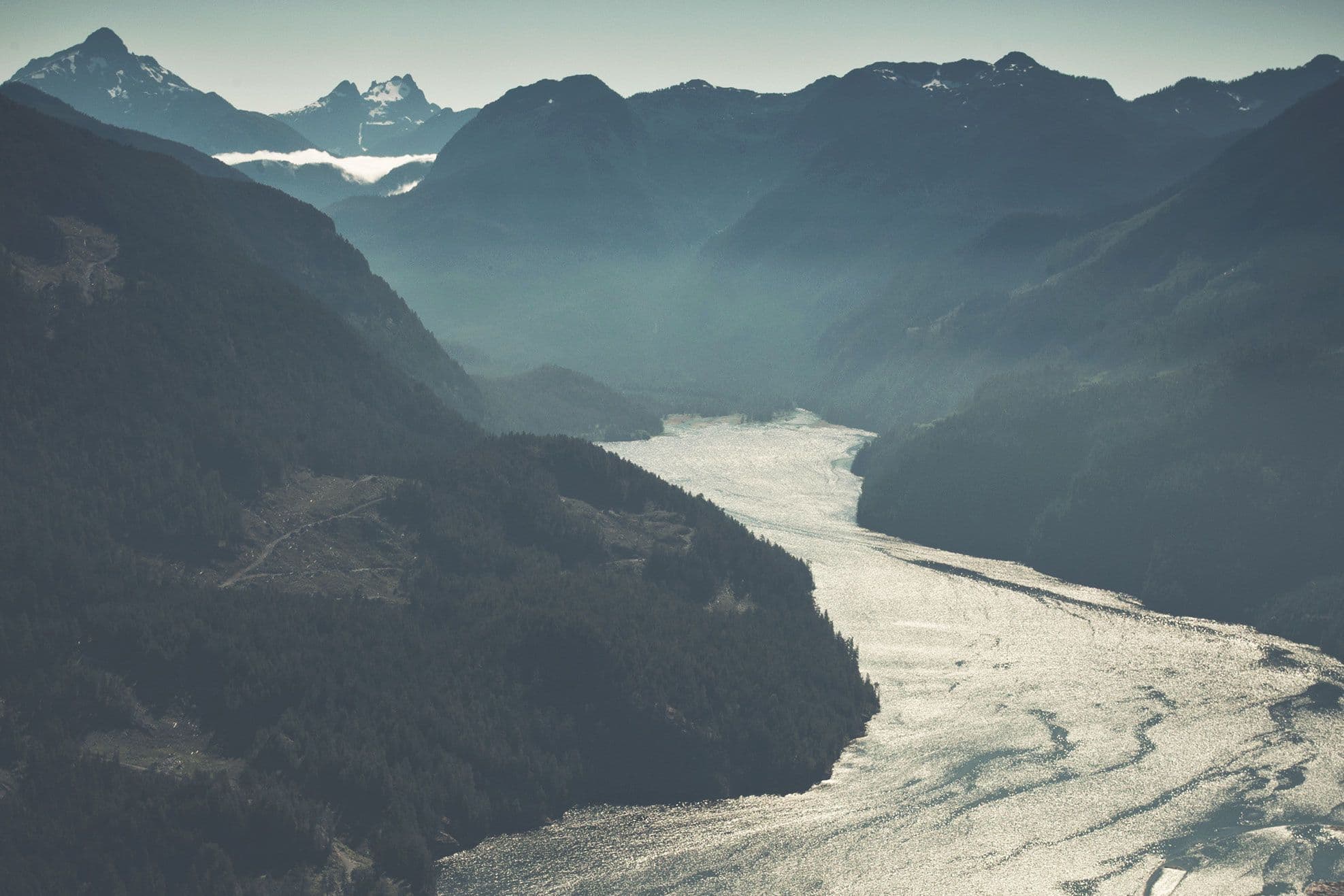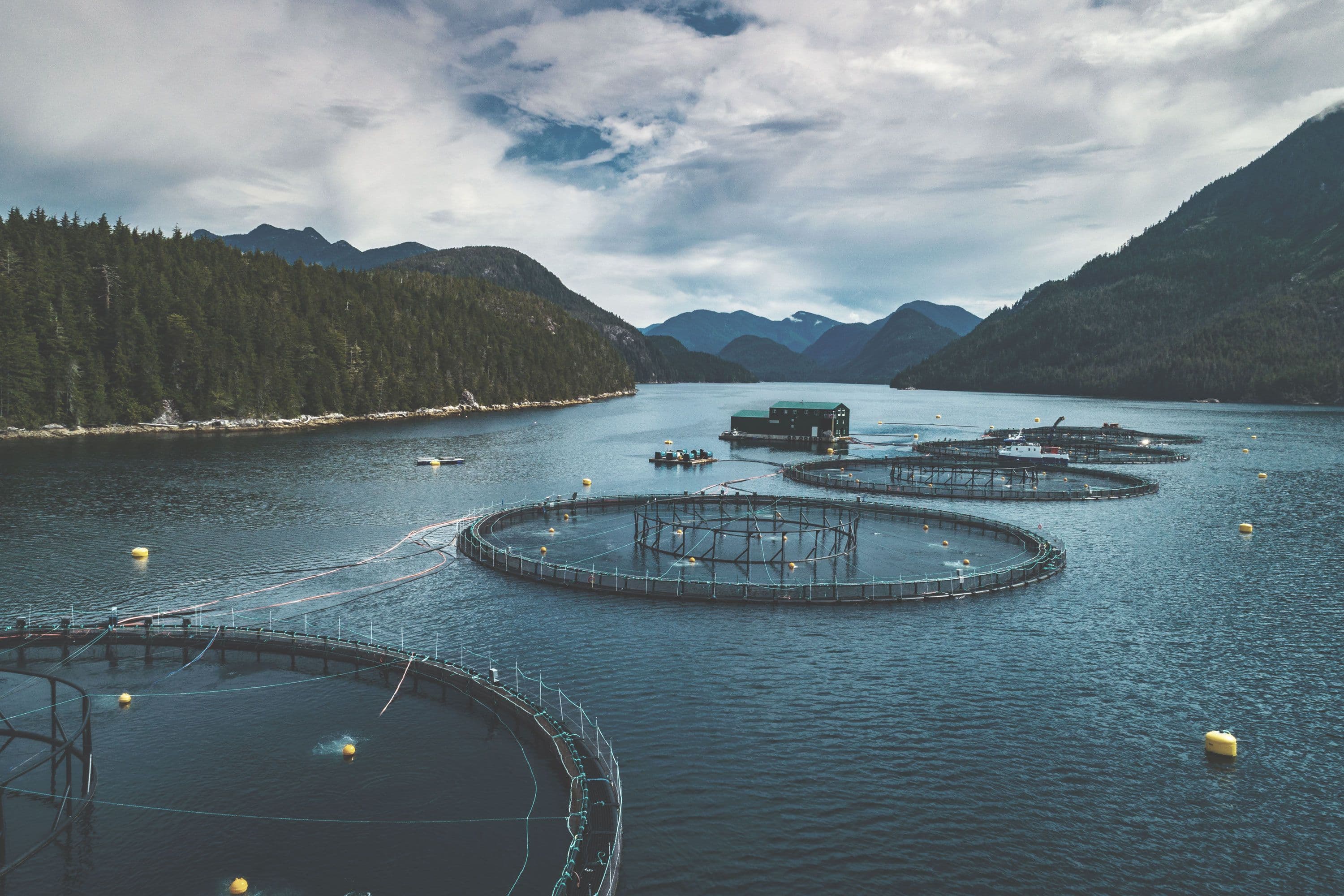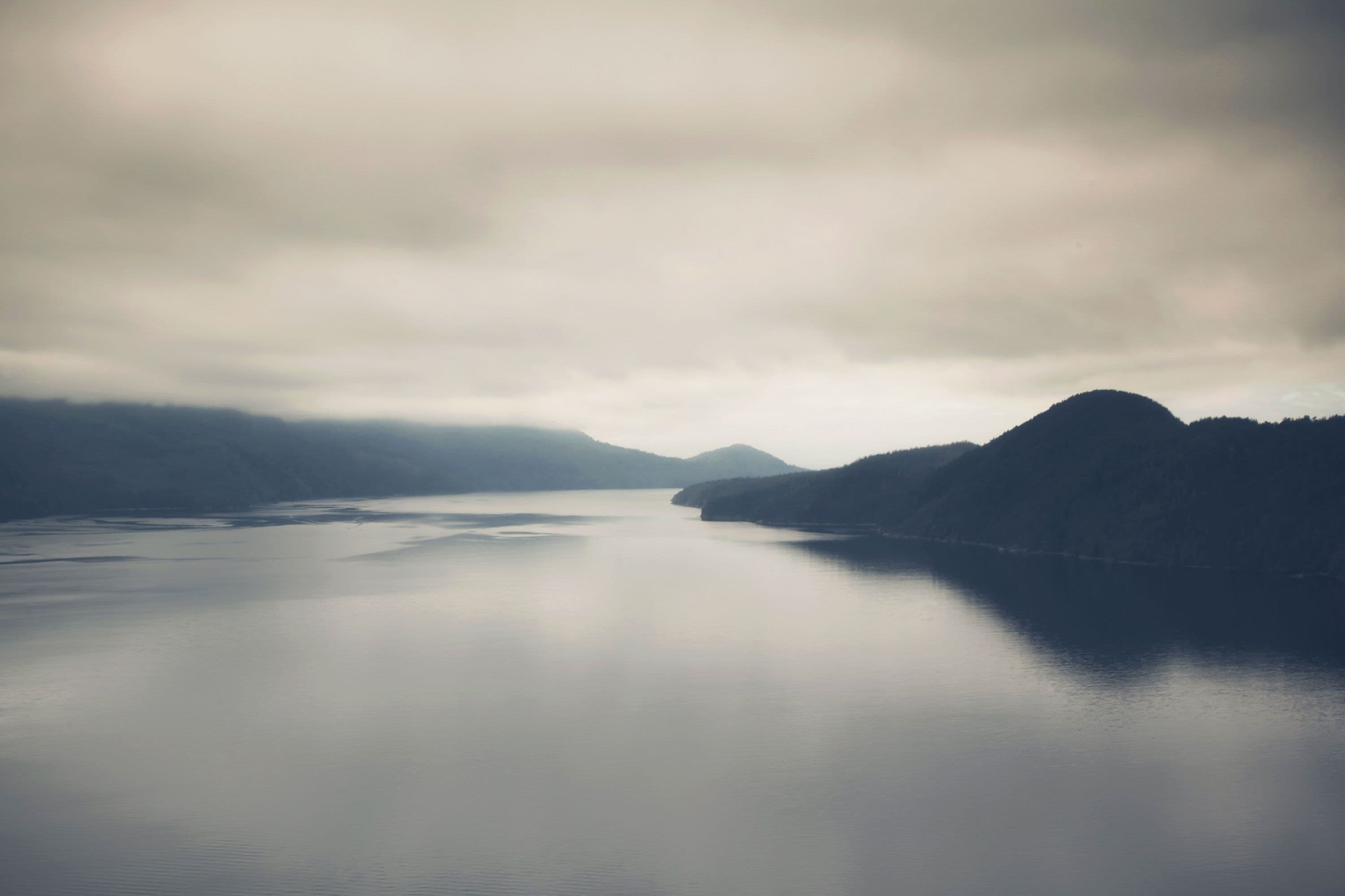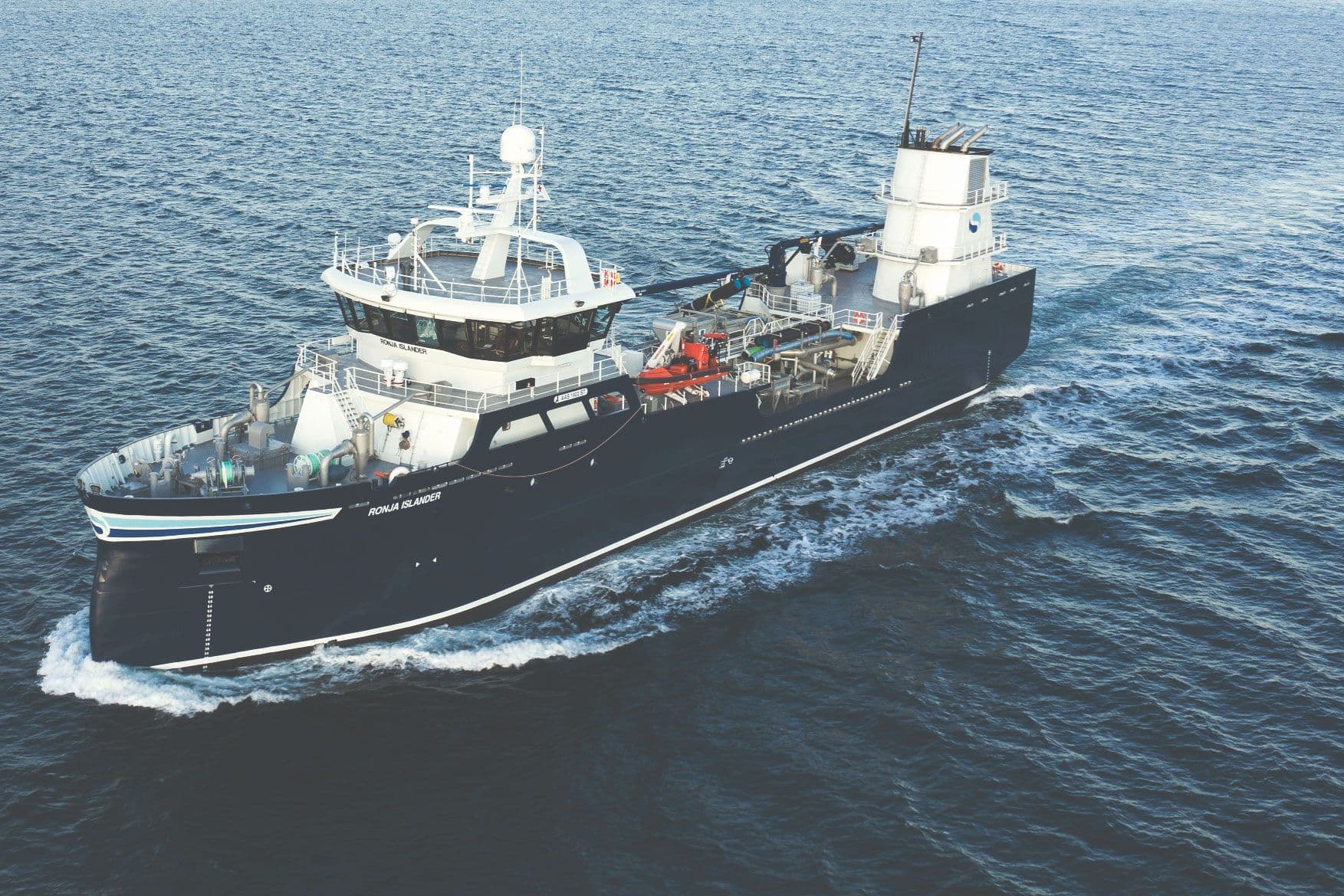
Why farm Atlantic salmon?
Answer: Atlantic salmon are the preferred species to raise in cold marine waters as they have been domesticated to be more docile, efficiently turn their fish feed into meat, and are resistant to many diseases. The name ‘Atlantic salmon’ refers to the species of fish most commonly farmed around the world, whereas the words ‘Pacific salmon’ refers to the five wild species that reside in the eastern Pacific Ocean and they are Chinook, Chum, Coho, Pink and Sockeye. Masu and amago salmon reside only in Asia.
Do farmed salmon cause sea lice issues for wild salmon?
A: The ocean is the natural habitat for sea lice, which are external parasites that prey on all wild fish. The Alaska Department of Fish & Games estimates that sea lice have existed as long as salmon have been present in the Pacific Ocean. When we transfer our fish from our freshwater hatcheries to the ocean, they go to sea free of sea lice. It is only when lice attach to and travel with migrating wild fish that they are then transferred to farmed fish. The risk is that the lice multiply to very high numbers and then the lice on farmed fish could transfer back to wild fish. A higher concentration of fish in an area (like a salmon farm) can create a higher concentration of sea lice. Environmental factors like higher water salinity and warmer ocean temperatures also add to increased populations of sea lice, which can cause health strains on juvenile wild salmon migrating through the same areas on their way to spawning grounds or the ocean.
Fact: Did you know that a good west coast rainfall can naturally reduce sea lice numbers? The change of salinity in ocean water from increased fresh water run-off will cause sea lice to come off both wild and farmed fish.
Salmon farmers actively engage in sea lice monitoring and removal treatments. Grieg Seafood is testing a sea lice mitigation program using the placement around the farms of tarp curtains at deeper depths (15 metres rather than 5 metres) to create a barrier near the surface-depths of the water, where sea lice are found. A new well boat will increase our ability to effectively apply sea lice removal options. These include the use of the simple chemical hydrogen peroxide with an innovative removal system which more quickly extracts the hydrogen peroxide; and a high-pressure sea lice filtration system that permanently removes the lice, so they are not returned to the ocean.
Fact: A 2019 report shows that juvenile salmon can carry an average of more than two lice per fish regardless of whether there are salmon farms in the area or not. The results of this study suggest that juvenile salmon naturally carry more than two lice per fish on any given year due to environmental conditions.
(Source: discovery-islands-juvenile-salmonid-monitoring-2019 )Grieg BC is committed to reducing its impact on wild salmon and the environment through the reduction of not only sea lice, but interactions between farmed and wild fish.
What happens to wild fish that are caught in salmon farm pens?
Wild fish such as perch, herring and juvenile salmon often seek protection from predators by swimming into salmon farm pens. Sometimes the wild fish remain there and grow too large inside the pen to get back out.
So, what happens?
During harvest, the wild fish are removed, identified by species and reported to our regulator, then released back into the ocean. The salmon farm then remains empty (fallow) for a number of months, just like a farmer’s field, so that the environment can recover from any residual impacts.
Do farmed salmon spread PRV to wild salmon?
Piscine reovirus (PRV) is found naturally in the ocean and is a virus that can infect both farmed and Pacific salmon. Since 2016 Grieg Seafood has been testing its smolts for this virus before they leave the hatchery and no smolt has tested positive for PRV. Despite going into ocean pens disease free, fish health monitoring has found it likely that all hatchery smolts will become infected with the virus within three or four months and possibly up to 10 months, affirming that the PRV virus is already in the marine environment.
Research into the presence of this virus is still ongoing within the salmon farming industry, scientists, government, First Nations, environmental non-government organizations (eNGOs) and coastal British Columbia research centres.
See our Q&A with Grieg veterinarian Dr Patrick Whittaker on PRV here: https://www.griegseafoodcanada.com/2020/03/qa-with-griegs-veterinarian-dr-patrick-whittaker-the-prv-debate/ Source: http://www.dfo-mpo.gc.ca/science/aah-saa/species-especes/aq-health-sante/prv-rp-eng.html
Is farmed fish healthy to eat?
BC farmed salmon, like other farmed seafood, is safe to eat and is available in restaurants and supermarkets across Canada and the US. Farmed salmon is most commonly found in sushi restaurants around the world.
Canada’s Food Guide recommends eating foods high in unsaturated fats, such as fatty fish like salmon. Heart-healthy Omega-3 fatty acids from salmon are derived from their diet. In wild salmon, the amount and type of Omega-3s are based on the algae and plankton in their natural ocean diet. In farmed salmon, the Omega-3 levels are incorporated into the components of their fish feed, of which 70% is plant-based.
As new fish feeds are being sustainably developed with less fishmeal, more protein is derived from grains and oilseeds. Fish oil is also partially replacing plant-derived oils. Farmed fish receive feed containing enough fish oil to maintain Omega-3 fatty acid levels equivalent to or higher than most wild salmon.
Sources: Gardner J and DL Peterson, 2003. Making Sense of the Salmon Aquaculture Debate: Analysis of Issues Related to Net cage Salmon Farming and Wild Salmon in British Columbia. Pacific Fisheries Resource Conservation Council.
Hites RA, Foran JA, Carpenter DO, Hamilton MC, Knuth BA, and SJ Schwager, 2004. Global Assessment of Organic Contaminants in Farmed Salmon. Science (303) 226- 229.
Do you dye the flesh of farmed salmon to look more orange?
In both wild and farm-raised salmon, the red colour of their flesh comes from pigmenting compounds called carotenoids, which are found in crustaceans, algae and other naturally occurring sources. While wild salmon get their colour by eating shrimp and krill, farm-raised salmon generally have carotenoids added to their feed, either through natural ingredients like ground-up crustaceans or synthetic forms. Without the added compounds as part of their diet, farm-raised salmon would have paler flesh. One of the chemicals in carotenoids that gives salmon their red shade is called astaxanthin. It’s safe for human food consumption and is included in salmon feed.
Fact: Did you know that flamingos aren’t actually pink? Their feathers are grey when they hatch, and the feathers gradually turn pink in the wild. They obtain this natural pink element called canthaxanthin from their diet of brine shrimp and blue-green algae. Until researchers understood the effect of this pink element in animal diets, flamingos in zoos would often lose most of their pink colouration until keepers started adding synthetic canthaxanthin to their diets.
Source: https://time.com/4790794/farmed-salmon-pink/
Why do I see photos of deformed or injured salmon in fish farms?
Like all animals both farmed and wild, some grow bigger and healthier than others. Similarly, some salmon are born with deformities. Within a salmon farm (which may contain up to one million fish) a certain number of fish may be born with deformities.
In the wild, these less healthy salmon would be eaten by predators as they are not able to survive with other salmon in the natural environment. In enclosed net pens, these salmon are more protected. Some may die due to their deformity and others may survive until harvest.
When touring a salmon farm, you are likely to see some of these poorer-performing fish, unable to compete with more healthy salmon for food, swimming away from the quicker, larger fish that are schooling in each pen.
Poorer-performing fish are removed either at the time of harvest or at processing. These fish are then transported to a rendering plant or used to make fertilizer.
Winter ulcers are an infection caused by naturally present bacteria during the winter. Grieg BC vaccinates all fish against this skin infection which is usually associated with colder water temperatures and seems to affect some coastal farms more than others. The bacteria forms as an ulcer in the fish’s skin and mortality rates are usually very low. Most fish will heal.
What happens if farmed salmon escape?
There have been instances where a tear in a net due to predators such as seals or sea lions pulling on the net, a bad storm, or wood debris washing up, has resulted in some farmed salmon being released outside of their pen. In recent years, with increased research into improving net strengths and the installation of a second net wall around a farm to deter predators, incidences of salmon getting outside their pens has been greatly reduced. When an accidental release occurs, due to their domestication, farmed salmon are too accustomed to feed pellets to pursue other wild fish and tend to remain in proximity to their pen where they are recaptured if they are not eaten first by seals and sea lions.
Historically, Atlantic salmon were stocked by the provincial government into BC waters more than a century ago in the hopes of establishing salmon populations for recreational fishing. In 1905, 200,000 salmon were introduced into lakes and streams on the BC mainland and Vancouver Island. By 1935, over eight million Atlantic salmon had been unsuccessfully introduced into BC fresh waters.
None of these attempts were successful in establishing Atlantic salmon on BC’s Pacific coast. They were not able to spawn in streams or rivers, possibly because the existing Pacific salmon species are considered more aggressive and outcompeted them for food resources and freshwater spawning grounds.
Do you use antibiotics on farmed salmon?
In salmon farming, antibiotics are only prescribed by a licensed veterinarian for treatment. All ethical animal health and welfare practices require the use of vaccinations as prescribed to maintain optimum animal health. The Canadian Veterinary Medical Association requires veterinarians to conduct themselves according to their Principles of Veterinary Medical Ethics which Veterinary Oath includes that they will strive to:
- promote animal health and welfare;
- prevent and relieve animal suffering;
- protect the health of the public and the environment, and
- advance comparative medical knowledge
Vaccines are an important part of salmon farming fish health management. Young fish known as smolts, are administered vaccines prior to leaving the freshwater hatchery and being transferred to saltwater ocean pens, to protect them against common pathogens found in the Pacific Ocean.
Vaccines prevent the spread of disease outbreaks between wild and farmed salmon. The successful application of newer vaccines also has allowed for an overall reduction in the level of antibiotics used in the past two decades.
Source: https://www.canadianveterinarians.net/documents/principles-of-veterinary-medical-ethics-of-the-cvma
Are you using wild fish, like herring, in your fish feed?
The combined percentage of fish meal and fish oil used in fish farm feed today ranges from 15% to 17%. Ongoing fish feed research means this number has been reduced in recent years. When it comes to fish feed there are strict regulations around content. Neither fish meal or fish oil can originate from illegal, unregulated, or unreported wild fish catches or from species categorized as vulnerable, endangered or critically endangered.
More than 40% of the fish meal and 60% of fish oil are sourced from fish trimmings from foods processed for human consumption, ie. from the herring roe industry, when the herring was harvested for its eggs for the roe food market. The majority of fish food sourcing comes from the United States, Peru and Chile.
What do farmed salmon eat?
Farmed Atlantic salmon are fed a dry pellet made from natural animal, plant, fish and marine protein with essential vitamins and minerals. Many of those ingredients are the same as those used in production of feed for domestic animals (dogs and cats). Fish feed and its ingredients used in Canada must be approved by the Canadian Food Inspection Agency (CFIA).
What do you do if you see harmful plankton?
There are many types of plankton species naturally occurring in the ocean, some which are not harmful to wild or farmed fish, while others can cause sickness or even be deadly to wild and farmed fish. Our environmental monitoring technicians and farm staff monitor the marine environment for conditions which indicate an increase in natural algal production. Staff are trained to identify harmful plankton and will initiate response procedures such as:
- minimizing workplace activity on the farm site to help lower possible stress by our fish
- suspending feeding the fish while they remain at deeper depths in their pens, below the algae levels close to the water’s surface.
- running systems which helps to pump water (upwelling) from deeper ocean depths into the fish pens, which helps to dilute the concentration of algae.
- using algae skirting or bubble curtains (walls of bubbles released from horizontal pipes which are lined with holes inside the pens and are connected to oxygen pumps) which help form a physical barrier around the perimeter of the farm to a depth of several metres, and helps to prevent the algae from entering the system.


